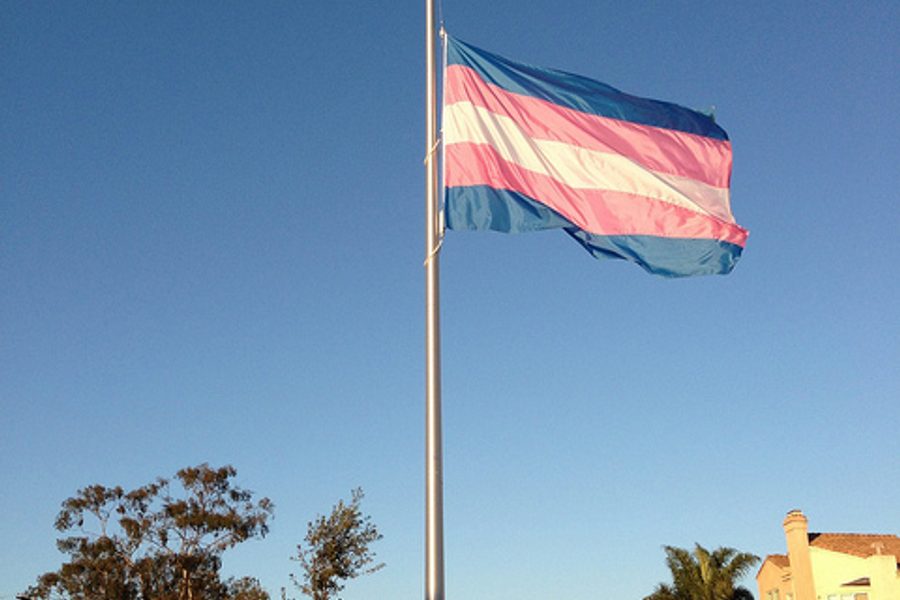Better Treatment of Trans Women by Philly Police Could Have Averted Brutal Murder, Says Activist
Melissa Gira Grant

“We always seemed to really click together, personality-wise,” Aamina Morrison says of Diamond Williams, whom she first met in a Philadelphia LGBT youth group 12 years ago. “Like the issues of oppression we shared or things that came up in her own transition. She didn’t realize those little things she did for me right there helped me see the possibility for who I am today.”
Williams was brutally murdered last month, her body dismembered and thrown in a field. A 43-year-old Philadelphia man named Charles Sargent, who has previously been charged with rape and aggravated assault, confessed to the crime and led the police to Williams’s remains. He will be tried for murder.
Morrison is now co-director of the peer-led Trans-Health Information Project, which, along with other LGBTQ and social justice groups in Philadelphia, is demanding justice for Williams. They believe Williams was targeted because she was transgender and working in the sex trade. Bringing Sargent to trial isn’t enough, they say; they want changes to how police and the media respond to violence against members of the transgender community.
Morrison has her own reason to believe that if Philadelphia police treated transgender victims of violence better, the friend she remembers from her youth group would still be alive. She says that when she saw Sargent’s photograph in the press after his confession, “it immediately took me back to an incident I had with him.”
She was approached by Sargent in the winter of 2003, she tells In These Times. “I was between jobs at the time, and I had to go back to different ends so I could be able to survive.” Sargent offered her a ride home, she says, “and I gave him a price for whatever it was that he was looking for, and he complied. But something seemed a little sketchy.” He insisted that they park in an isolated place. Morrison says that when Sargent asked her to reach across him to the overhead compartment to take her money, “he put a knife to my neck and a gun to my side,” and said he would kill her if she didn’t do “everything he asked.”
He raped her, says Morrison. “It felt like forever. It felt like I would never be able to get out of that car.” When he was done, she recalls, he took back the money he paid her and the rest of the money from her purse. He told her to get out of his car and that if she ran, he would shoot her, she says. “I remember him saying to me, ‘Look me in my eye,’ Which is why, when I saw the picture, I knew.”
But when Sargent looked away, Morrison says, she took a chance and ran, and finally managed to escape when a taxi driver stopped and positioned the car so that she could safely get in and avoid Sargent. “We didn’t say anything for about four blocks. And then he said, ‘I just had a feeling that you were in trouble,’ and he took me home.”
Morrison says she did not feel confident that she could report Sargent to the police. A year earlier, she says, she was assaulted in a similar incident, and a police officer found her afterward and took her to the station to file a report. “But as soon as that officer left, it was like the whole room changed,” she remembers. The other police called her names, Morrison says. “They told me, ‘We should have locked your ass up.’ “
Studies show that interactions like this are common, and make transgender people wary of reporting crimes to police. More than one-quarter of trans women in the U.S. who went to the police for help in 2012 reported receiving hostile treatment, according to an analysis [PDF] of reports of violence against LGBTQ and HIV-affected (LGBTQH) people conducted by the National Coalition of Anti-Violence Programs (NCAVP). The report also found that transgender women were 2.9 times more likely than cisgender women to experience violence from police when seeking help. Given this, it’s unsurprising that 43.5 percent of survivors of anti-LGBTQH violence surveyed by the NCAVP opted not to go to the police.
“I need to tell my story now,” Morrison tells In These Times. After Diamond Williams’s murder, Morrison learned “he’s assaulted other girls, and they’ve been afraid to speak up about it.”
Not another statistic
Diamond Williams’s death is not only disturbing in itself; it is part of a disturbing pattern. “We continue to see a disproportionate impact of deadly violence against transgender people, transgender women and people of color,” says Chai Jindasurat, co-director of community organizing and public advocacy at the New York Anti-Violence Project, a member of the NCAVP. The group’s 2012 report found that transgender women were the victims of 53 percent of all anti-LGBTQH homicides.
“We feel that we have to look at the root causes of why transgender women of color are being killed in disproportionate rates,” says Jindasurat. One factor is that transgender women face widespread discrimination in employment and housing, and as a result may be isolated from support and may also be perceived as vulnerable. “When I look at the details of the cases,” says Jindasurat, who co-authored the report, “many of the transgender women who are killed are low income, many of them are homeless, and many often may also be engaged in sex work.”
“We’re also really looking at where some of this starts, [including] the criminalization of LGBTQ communities,” says Jindasurat. When police profile these communities, transgender people are perceived as criminals even when they seek help — as when police threatened to lock up Morrison after she reported being assaulted.
The transgender community in Philadelphia is fed up with it all. “The initial response [to Williams’s death] was sadness, and then outrage — that this is happening yet again,” says Elicia Gonzales, executive director of Philadelphia’s GALAEI, a queer Latin@ social justice organization. Last September, Kyra Kruz, a transgender woman of color and activist, was murdered in Philadelphia.
“The outrage was intensified because the media did such a horrible job — really, I feel like, did a hateful job in reporting the [Williams] case,” Gonzales says. Reports of Williams’s murder called her “a transgender prostitute” and used incorrect male pronouns, or described her as a “male prostitute dressed as a woman.” One ran an old mugshot instead of a regular photograph. Monica Roberts, blogging at Transgriot, pointed out that media ran with this coverage “without any attempt at balance in terms of finding anyone in the trans community who knew the victim.” LGBT media advocacy group GLAAD criticized local Philadelphia media for running “irrelevant information about her past.”
Most troublingly, early coverage of the murder by outlets such as the New York Daily News and Philadelphia’s NBC10 repeated the Philadelphia Police Department’s claim that she was killed by Sargent after he “discovered” she was transgender. “According to the police, he panicked,” says Morrison. “But according to myself and other members of the trans community, we are all aware of Mr. Sargent,” including his past encounters paying transgender women for sex. “This seemingly disparate cry of ‘I didn’t know she was trans,’ that’s a very bold and straight-faced lie.”
Community members also point out that even if Sargent and Williams had been strangers, the idea that such a “discovery” would explain Williams’s murder is an attempt to blame the victim. “I don’t care if he knew or he didn’t know — no one deserved to die like that,” said Williams’s close friend Rachel Rose to local reporters at a vigil at Love Park in July. “That’s someone’s life — that he brutally murdered. And dismembered. And threw her parts in a field.”
‘Trayvon Martin many times over’
As Sargent’s case goes to trial, Morrison said she will turn her work towards the individual community members, their grieving and their demands for accountability. With all the attention to the Trayvon Martin case, Morrison says, “and this is not to take anything away from him — but we have been Trayvon Martin many times over. I have been burying my brothers for many, many years. I have burying my sisters for many, many years. We know the justice system is not meant for us.”
“We are hoping, should [Sargent] get a hearing,” says Morrison, “that we be present so he can see the many faces of the other people he has victimized and who have lived to tell the story.”



